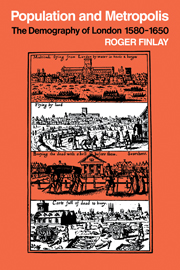3 results in Cambridge Geographical Studies

The Urban Mosaic
- Towards a Theory of Residential Differentiation
-
- Published online:
- 05 January 2012
- Print publication:
- 02 March 1971

Population and Metropolis
- The Demography of London 1580–1650
-
- Published online:
- 06 July 2010
- Print publication:
- 20 August 1981

The Agricultural Systems of the World
- An Evolutionary Approach
-
- Published online:
- 10 March 2010
- Print publication:
- 07 November 1974

